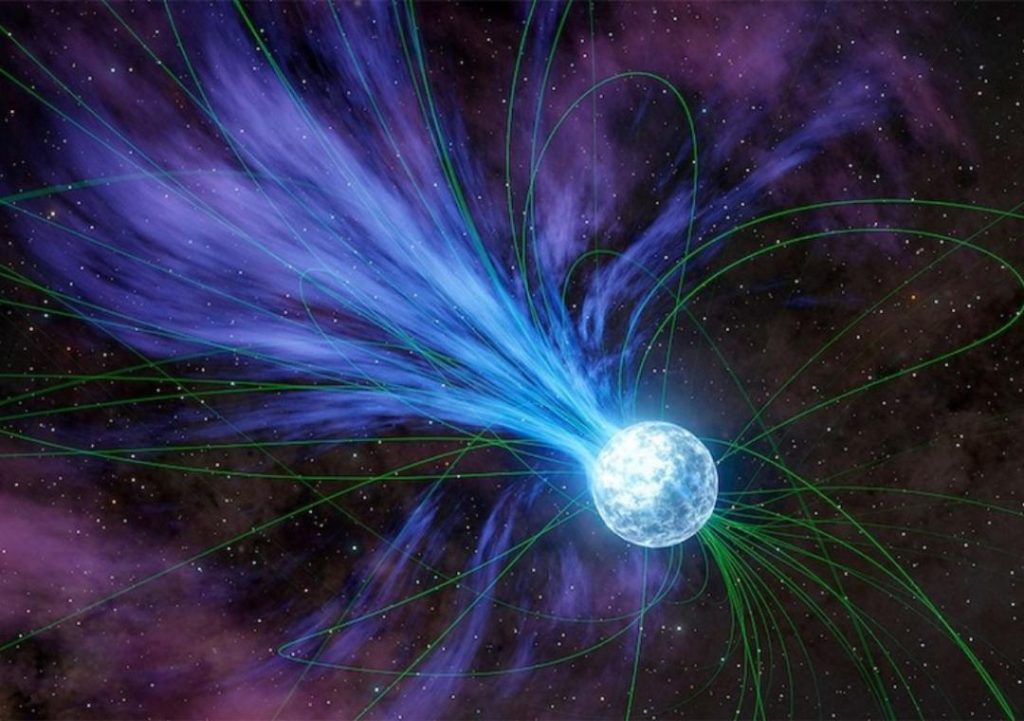
Gold & Platinum Created Through Neutron Stars’ Explosions: Study
For centuries, humans have been fascinated by the origins of precious metals like gold and platinum. While we’ve long known that these elements are formed through geological processes on Earth, scientists have been searching for answers on a much larger scale – specifically, how they came to be in the universe.
Recently, a groundbreaking study led by Columbia University student Anirudh Patel has shed new light on this mystery. According to the research, magnetars – or highly magnetized neutron stars – played a crucial role in the creation of elements like gold and platinum in a cosmic event that occurred over 20 years ago.
The study, which was published in the journal Nature Astronomy, revealed that magnetars exploded and released flares that contained these precious elements. These explosions happen approximately once per decade in the Milky Way and annually across the observable universe.
So, what exactly are magnetars, and how do they contribute to the creation of gold and platinum? To understand the process, let’s first take a step back and explore the basics of neutron stars and magnetars.
Neutron stars are incredibly dense celestial bodies formed when a star with a mass at least three times that of the sun runs out of fuel and collapses under its own gravity. This collapse causes the star’s core to compress into a tiny, spinning ball of neutrons, with densities so high that a sugar-cube-sized amount of neutron star material would have a mass of about a billion tons.
Magnetars, on the other hand, are a specific type of neutron star that is characterized by its incredibly strong magnetic field. These magnetic fields are so powerful that they can generate intense bursts of radiation and energy when they decay.
The study led by Patel suggests that it was the explosion of a magnetar that played a crucial role in the creation of gold and platinum. According to the researchers, the explosion released a massive amount of energy, which triggered a chain reaction of nuclear reactions in the surrounding environment.
These nuclear reactions involved the fusion of lighter elements, such as hydrogen and helium, into heavier elements like iron. The energy released during this process caused the iron to be heated to incredibly high temperatures, causing it to undergo further nuclear reactions and form even heavier elements, including gold and platinum.
The researchers used data from NASA’s Swift Gamma-Ray Burst Mission to study the magnetar explosion that occurred in 2017. By analyzing the radiation emitted during the explosion, the team was able to identify the presence of gold and platinum in the flares.
The discovery has significant implications for our understanding of the origins of precious metals in the universe. As Patel noted in a statement, “This study shows that neutron stars can be responsible for creating many of the heavy elements we find on Earth, including gold and platinum. This challenges our previous understanding of the origins of these elements and opens up new avenues for research.”
The study also provides new insights into the role that magnetars play in the universe. As the researchers noted, these explosions happen relatively frequently, occurring once per decade in the Milky Way and annually across the observable universe.
The fact that these explosions can create such a wide range of elements, from iron to gold and platinum, suggests that magnetars may be responsible for creating a significant portion of the heavy elements found in the universe.
As scientists continue to study the origins of precious metals, this groundbreaking research provides a new and exciting perspective on the role that magnetars play in shaping the chemical makeup of the universe.
In conclusion, the study led by Anirudh Patel has shed new light on the origins of precious metals like gold and platinum. The discovery that magnetars can create these elements through their explosions provides a fascinating glimpse into the complex and dynamic processes that shape the universe.
As we continue to explore the mysteries of the cosmos, we may yet uncover even more secrets about the origins of the precious metals that we find on Earth. For now, this groundbreaking research has provided a new and exciting perspective on the role that magnetars play in creating the elements that make our world so rich and diverse.
Sources:






